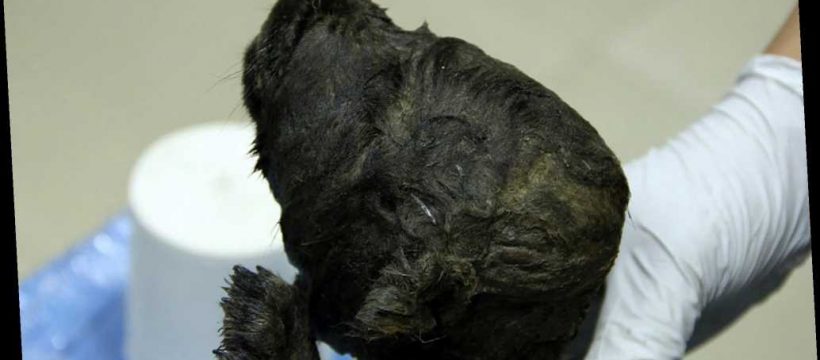Scientists in Russia have unearthed the frozen remains of an 18,000-year-old canine near Yakutsk in eastern Siberia, but the mysterious origins of the puppy are puzzling.
Despite the fossil being uncommonly well-preserved — with its nose, fur and teeth still intact — geneticists can’t decide one thing: Is the specimen a dog or a wolf?
Radiocarbon dating of a rib bone by experts from Sweden’s Centre for Palaeogenetics reveals the animal’s age, but further DNA testing has not definitively confirmed its canine species.
“It’s normally relatively easy to tell the difference between the two,” says David Stanton, a researcher at the center.
“We have a lot of data from it already, and with that amount of data, you’d expect to tell if it was one or the other. The fact that we can’t might suggest that it’s from a population that was ancestral to both — to dogs and wolves,” Stanton tells CNN.
For now, researchers have dubbed their discovery Dogor, the Yakut word for “friend.”
Stanton explains that the period in which Dogor lived is “a very interesting time in terms of wolf and dog evolution.”
“We don’t know exactly when dogs were domesticated, but it may have been from about that time,” he adds. “We are interested in whether it is, in fact, a dog or a wolf, or perhaps it’s something halfway between the two.”
Today’s pet pooch is thought to have been tamed from wolf breeds, though scientists can’t exactly pinpoint when that genetic branching took place. A 2017 study in the journal Nature Communications asserts that modern dogs were domesticated from a specific group of wolves who lived 20,000 to 40,000 years ago.
However, a study published in the journal Science the previous year found that dogs descended from two populations of gray wolves during the Paleolithic period, in both Asia and Europe.
Paleogeneticist Love Dalén points out in a tweet that if Dogor turns out to be a dog, it would be the oldest ever recovered by paleontologists.
“Question: is it a #wolf cub, or possibly the oldest #dog ever found?,” writes Dalén, adding that his colleagues plan to sequence the creature’s genome in search of the answer.
Source: Read Full Article
